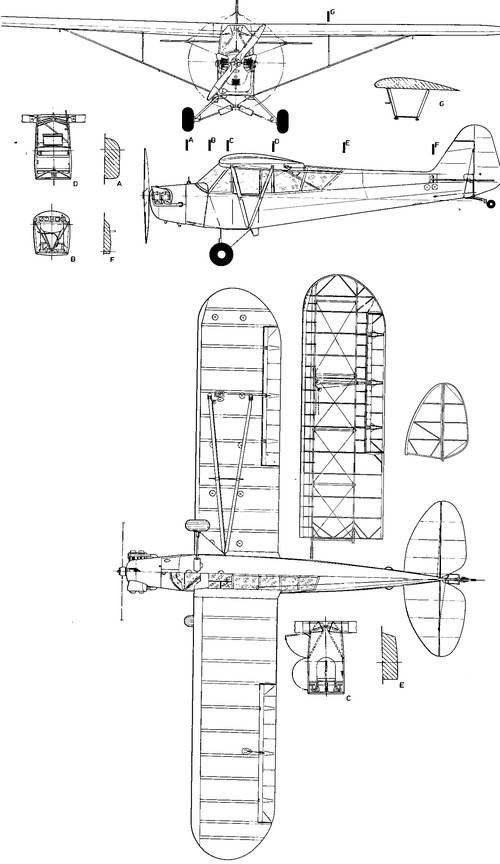A tactical aircraft in the Second World War, the L-4 was a workhorse of the Allies, with around 20,000 produced.
Modified from the Piper J-3 Cub, the L-4 was a light observation and liaison aircraft adapted for military use during World War II. Its primary role was airborne artillery, which required the L-4 to fly over battlefields, observe, spot enemy artillery and troop positions and radio the information to Allied Ground Forces who then directed artillery or air strikes on the enemy. These aircraft served in all theaters of World War II, as well as in both the Korean and Vietnam Wars.

Serial Number: 45-4655
Manufacturer: Piper Aircraft, Inc.
Crew: One or two
Engines: One Continental A65 four-cylinder reciprocating; 65 horsepower
Wingspan: 35 feet 3 inches
Length: 22 feet 5 inches
Height: 6 feet 8 inches
Weight: 680 pounds (empty); 1,200 pounds (maximum)
Speed: 75 mph (cruising); 85 mph (maximum)
Range: 190 miles
Service Ceiling: 11,500 feet
Armament: None
Cost: $2,600
In 1949, the L-4s were among the many aircraft that were repaired and modified at Hill Air Force Base. A few years late, they were stored on the installation after the Korean War. The L-4J on display was manufactured in 1945 and served the 15th Air Force in Bari, Italy. That same year, the aircraft returned to the United States (US) and served on several different bases and training commands. Due to a flying accident in 1952, the aircraft was dropped from active US Air Force inventory and was later acquired by Hill Aerospace Museum for display.
A tactical aircraft in the Second World War, the L-4 was a workhorse of the Allies, with around 20,000 produced.
The Grasshopper was introduced to the North African campaign in 1943, acting as a liaison, artillery spotter, air ambulance and observation aircraft.
With a wingspan of 35 feet and a length of 22 feet, the Grasshopper worked well as a spotter, able to loiter over areas with its light frame and large wings.